 In their book, The ABCs of How We Learn, Daniel Schwartz, Jessica Tsang, and Kristen Blair (Stanford University) present 26 principles of pedagogy, matched with a letter of the alphabet. Each is accompanied by an overview of the research, how the item works, how to use it in the classroom, what it’s good for, its risks, examples of good and bad use, and a short summary. Here’s a synopsis written by Kim Marshall and presented in The Marshall Memo:
In their book, The ABCs of How We Learn, Daniel Schwartz, Jessica Tsang, and Kristen Blair (Stanford University) present 26 principles of pedagogy, matched with a letter of the alphabet. Each is accompanied by an overview of the research, how the item works, how to use it in the classroom, what it’s good for, its risks, examples of good and bad use, and a short summary. Here’s a synopsis written by Kim Marshall and presented in The Marshall Memo:
 Analogy – By identifying the underlying similarity between things that have surface differences (for example, blood vessels and highways), analogies help people learn principles and apply them in new situations. “Analogies help students sort out the wheat of deep structure from the chaff of surface features,” say the authors. “Analogies can help students make a positive transfer.”
Analogy – By identifying the underlying similarity between things that have surface differences (for example, blood vessels and highways), analogies help people learn principles and apply them in new situations. “Analogies help students sort out the wheat of deep structure from the chaff of surface features,” say the authors. “Analogies can help students make a positive transfer.”
 Belonging – Feeling that they belong to a learning community makes students try harder and decreases distracting thoughts of inadequacy and alienation. “Learning is social,” say Schwartz, Tsang, and Blair. “Belonging is the perception of being accepted, valued, and included. Belonging can help learning by increasing effort and decreasing negative distancing thoughts.” Teachers who explicitly create an atmosphere of respect and community boost learning and close racial and economic achievement gaps.
Belonging – Feeling that they belong to a learning community makes students try harder and decreases distracting thoughts of inadequacy and alienation. “Learning is social,” say Schwartz, Tsang, and Blair. “Belonging is the perception of being accepted, valued, and included. Belonging can help learning by increasing effort and decreasing negative distancing thoughts.” Teachers who explicitly create an atmosphere of respect and community boost learning and close racial and economic achievement gaps.
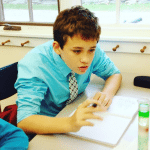 Contrasting cases – Noticing the difference between two or more examples that seem the same at first glance – for example, a spider and an insect. “Contrasting cases help people notice subtle but important details that they might otherwise overlook,” say the authors.
Contrasting cases – Noticing the difference between two or more examples that seem the same at first glance – for example, a spider and an insect. “Contrasting cases help people notice subtle but important details that they might otherwise overlook,” say the authors.
 Deliberate practice – Applying focused and effortful practice to develop specific skills and concepts (for example, playing the guitar or solving physics problems) beyond one’s current abilities. “Deliberate practice automatizes skills and concepts so they become faster, more accurate, more variable, and less effortful to execute,” say Schwartz, Tsang, and Blair. “This allows people to see new patterns and frees cognitive resources so people can attempt more complex tasks.”
Deliberate practice – Applying focused and effortful practice to develop specific skills and concepts (for example, playing the guitar or solving physics problems) beyond one’s current abilities. “Deliberate practice automatizes skills and concepts so they become faster, more accurate, more variable, and less effortful to execute,” say Schwartz, Tsang, and Blair. “This allows people to see new patterns and frees cognitive resources so people can attempt more complex tasks.”
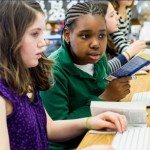 Elaboration – Explicitly connecting new information to prior knowledge, which increases the chances of remembering it later. “Human memory is vast,” say the authors. “Remembering depends on finding the right memory at the right time. Elaboration makes connections among memories when learning, so it is easier to find a path to the stored information later.”
Elaboration – Explicitly connecting new information to prior knowledge, which increases the chances of remembering it later. “Human memory is vast,” say the authors. “Remembering depends on finding the right memory at the right time. Elaboration makes connections among memories when learning, so it is easier to find a path to the stored information later.”
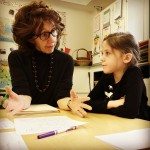 Feedback – This allows people to sense a discrepancy between what they did and what they should have done, which allows them to adjust future actions. “People would have a hard time learning something new if they never knew whether they were on the right track,” say the authors. “Feedback, particularly constructive negative feedback, guides people toward what they can do to improve and learn.”
Feedback – This allows people to sense a discrepancy between what they did and what they should have done, which allows them to adjust future actions. “People would have a hard time learning something new if they never knew whether they were on the right track,” say the authors. “Feedback, particularly constructive negative feedback, guides people toward what they can do to improve and learn.”
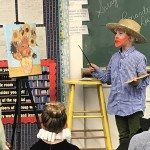 Generation – Retrieving a specific memory (like where you parked your car in a multi-story garage) given partial cues or hints improves future retrieval. Retrieval – testing yourself – increases the strength of the memory, making it easier to retrieve later on. Spreading out retrieval practice over several days enhances the effect.
Generation – Retrieving a specific memory (like where you parked your car in a multi-story garage) given partial cues or hints improves future retrieval. Retrieval – testing yourself – increases the strength of the memory, making it easier to retrieve later on. Spreading out retrieval practice over several days enhances the effect.
 Hands-on – Recruiting the body’s intelligence makes it possible to understand abstract concepts. “The perceptual-motor system contains tremendous intelligence,” say the authors. “This intelligence provides meaning for simple symbols and words… Hands-on learning recruits the perceptual-motor system to coordinate its meaning with symbolic representations.” Two risks: hands-on activities can become procedures for finding answers rather than a source of sense-making; and students may become too dependent on them.
Hands-on – Recruiting the body’s intelligence makes it possible to understand abstract concepts. “The perceptual-motor system contains tremendous intelligence,” say the authors. “This intelligence provides meaning for simple symbols and words… Hands-on learning recruits the perceptual-motor system to coordinate its meaning with symbolic representations.” Two risks: hands-on activities can become procedures for finding answers rather than a source of sense-making; and students may become too dependent on them.
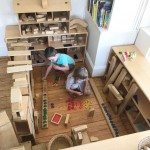 Imaginative play – This involves creating a story that is different from the reality in front of us, letting one thing stand for another – for example, a child pretends a fork (a mother) is scolding a spoon (a child) for not eating her peas. There isn’t a lot of research evidence on the efficacy of play, but the authors say it “can serve as a great vehicle for delivering activities known to support maturation and learning.”
Imaginative play – This involves creating a story that is different from the reality in front of us, letting one thing stand for another – for example, a child pretends a fork (a mother) is scolding a spoon (a child) for not eating her peas. There isn’t a lot of research evidence on the efficacy of play, but the authors say it “can serve as a great vehicle for delivering activities known to support maturation and learning.”
 Just-in-time telling – Students are immersed in a simulation of a problem and are then given an explanation. “The simulation provides students with rich experiences,” say the authors, “and the debriefing provides an explanation or framework for organizing those experiences. Without the experience, the explanation would be too abstract. Without the explanation, the experiences would just be a collection of memories. Together, they produce usable knowledge.”
Just-in-time telling – Students are immersed in a simulation of a problem and are then given an explanation. “The simulation provides students with rich experiences,” say the authors, “and the debriefing provides an explanation or framework for organizing those experiences. Without the experience, the explanation would be too abstract. Without the explanation, the experiences would just be a collection of memories. Together, they produce usable knowledge.”
 Knowledge – Prior knowledge enables people to make sense of new information and is essential to learning. But knowledge can also blind people to new conditions that have different patterns; for example, the vaults being set two inches lower in the 2000 Summer Olympics caused major problems for female gymnasts who had trained on a different elevation. The trick is to combine extensive knowledge with the ability to adapt.
Knowledge – Prior knowledge enables people to make sense of new information and is essential to learning. But knowledge can also blind people to new conditions that have different patterns; for example, the vaults being set two inches lower in the 2000 Summer Olympics caused major problems for female gymnasts who had trained on a different elevation. The trick is to combine extensive knowledge with the ability to adapt.
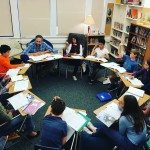 Listening and sharing – Students may be disengaged and bored in class, trapped in their own thoughts, and lacking the skills needed to work together. Once those skills have been taught, say the authors, “students maintain joint attention, listen, share, coordinate, and try to understand one another’s points of view. This can help learners exchange information and develop a multifaceted understanding.”
Listening and sharing – Students may be disengaged and bored in class, trapped in their own thoughts, and lacking the skills needed to work together. Once those skills have been taught, say the authors, “students maintain joint attention, listen, share, coordinate, and try to understand one another’s points of view. This can help learners exchange information and develop a multifaceted understanding.”
Making – Producing an artifact or performance, getting feedback, and setting new goals – for example, writing a poem to perform at a local spoken-word festival. “Making has motivations that naturally produce a learning cycle that expands one’s means of production,” say the authors. “Motivations include the desire for feedback on the realization of one’s ideas, and the creation of new challenges that motivate makers to learn more skills and methods.”
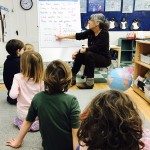
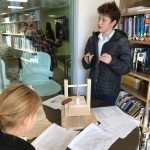 Norms – These are the informal rules that regulate social interactions – for example, student-generated classroom rules or a protocol for mathematics debates. “Good norms help coordinate learning interactions,” say the authors, “both at the level of good behaviors and at the level of the way different disciplines engage their topics.”
Norms – These are the informal rules that regulate social interactions – for example, student-generated classroom rules or a protocol for mathematics debates. “Good norms help coordinate learning interactions,” say the authors, “both at the level of good behaviors and at the level of the way different disciplines engage their topics.”
Observation – “Human brains are wired to learn by observing others,” say the authors. Often trial-and-error is slow and inefficient, a behavior is too complex to explain verbally, and learners are not sure how to act or feel. Learning by observing and imitating other people’s behaviors and affective responses is more efficient, as is vicariously seeing the consequences of others’ behaviors.
 Participation – This “provides learners with access to the goals, consequences, methods, and interpretations that render learning meaningful,” say the authors. An example: a surfing instructor tows beginners out to sea and pushes the surfboard at the right moment to catch a wave, so the novice can focus on balancing and experiencing what it means to surf. Gradually the scaffolding is withdrawn.
Participation – This “provides learners with access to the goals, consequences, methods, and interpretations that render learning meaningful,” say the authors. An example: a surfing instructor tows beginners out to sea and pushes the surfboard at the right moment to catch a wave, so the novice can focus on balancing and experiencing what it means to surf. Gradually the scaffolding is withdrawn.
 Question-driven – Being asked to answer a driving question increases curiosity, purpose, attention, and well-connected memories and may develop problem-solving skills. For example, a class might investigate how noise pollution affects the wildlife around their school.
Question-driven – Being asked to answer a driving question increases curiosity, purpose, attention, and well-connected memories and may develop problem-solving skills. For example, a class might investigate how noise pollution affects the wildlife around their school.
 Reward – Rewards, extrinsic and intrinsic, can motivate desired behaviors, and rewarding successive approximations of proficiency can help students achieve the desired level. But rewards can backfire if people already find something intrinsically motivating or if the goal is creativity and exploration. Rewards can also reduce intrinsic motivation by making people dependent on external reinforcement.
Reward – Rewards, extrinsic and intrinsic, can motivate desired behaviors, and rewarding successive approximations of proficiency can help students achieve the desired level. But rewards can backfire if people already find something intrinsically motivating or if the goal is creativity and exploration. Rewards can also reduce intrinsic motivation by making people dependent on external reinforcement.
 Self-explanation – Silently talking through expository material improves understanding by revealing gaps in knowledge, and forces one to fill in missing information to make a coherent explanation. The main learning problem this addresses is overconfidence.
Self-explanation – Silently talking through expository material improves understanding by revealing gaps in knowledge, and forces one to fill in missing information to make a coherent explanation. The main learning problem this addresses is overconfidence.
 Teaching – “Teaching is not just good for pupils,” say the authors; “it is good for the teacher, too… Asking older students to tutor younger students is an excellent example of learning by teaching. Tutors improve their understanding nearly as much as tutees.”
Teaching – “Teaching is not just good for pupils,” say the authors; “it is good for the teacher, too… Asking older students to tutor younger students is an excellent example of learning by teaching. Tutors improve their understanding nearly as much as tutees.”
 Undoing – Identifying misconceptions and faulty reasoning and replacing them with correct information; for example, a child says 13 – 7 = 14, perhaps believing that she can’t subtract 7 from 3 so she subtracts 3 from 7. The teacher needs to make this misconception explicit and teach some basic arithmetic principles to keep the misconception from becoming entrenched.
Undoing – Identifying misconceptions and faulty reasoning and replacing them with correct information; for example, a child says 13 – 7 = 14, perhaps believing that she can’t subtract 7 from 3 so she subtracts 3 from 7. The teacher needs to make this misconception explicit and teach some basic arithmetic principles to keep the misconception from becoming entrenched.
 Visualization – Drawing spatial representations – maps, diagrams, sketches, graphs, Venn diagrams, matrices – helps organize complex information, make it understandable, and embed it in memory. A classic example: in the early 1900s, Harry Beck created a simplified map of the London subway system that sacrificed exact geographical detail for a structure more relevant to a subway rider. This type of map is now used in nearly every subway system around the world.
Visualization – Drawing spatial representations – maps, diagrams, sketches, graphs, Venn diagrams, matrices – helps organize complex information, make it understandable, and embed it in memory. A classic example: in the early 1900s, Harry Beck created a simplified map of the London subway system that sacrificed exact geographical detail for a structure more relevant to a subway rider. This type of map is now used in nearly every subway system around the world.
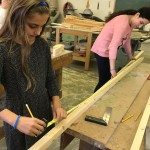 Worked examples – These are step-by-step models of how to complete a procedural task – for example, doing a long-division problem. Worked examples build on observational learning, allowing the learner to observe and imitate well-defined steps.
Worked examples – These are step-by-step models of how to complete a procedural task – for example, doing a long-division problem. Worked examples build on observational learning, allowing the learner to observe and imitate well-defined steps.
eXcitement – “Excitement increases psychological arousal, which focuses attention and improves memory acquisition,” say the authors. “However, too much excitement interferes with performance and learning. Arousal and anxiety combine to cause choking under pressure.”
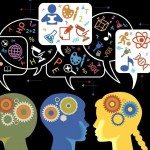 Yes I can – Self-efficacy – believing one can succeed – makes people more willing to take on a challenging activity, persist in the face of difficulty and failure, take on more challenges, and accomplish more. This is what Carol Dweck calls a growth mindset.
Yes I can – Self-efficacy – believing one can succeed – makes people more willing to take on a challenging activity, persist in the face of difficulty and failure, take on more challenges, and accomplish more. This is what Carol Dweck calls a growth mindset.
 ZZZs – Research has established that while we sleep, recent memories are consolidated into long-term storage and integrated with prior knowledge. John Steinbeck once wrote, “A problem difficult at night is resolved in the morning after the committee of sleep has worked on it.”
ZZZs – Research has established that while we sleep, recent memories are consolidated into long-term storage and integrated with prior knowledge. John Steinbeck once wrote, “A problem difficult at night is resolved in the morning after the committee of sleep has worked on it.”
The ABCs of How We Learn: 26 Scientifically Proven Approaches, How They Work, and When to Use Them by Daniel Schwarz, Jessica Tsang, and Kristen Blair (W.W. Norton, 2016)
